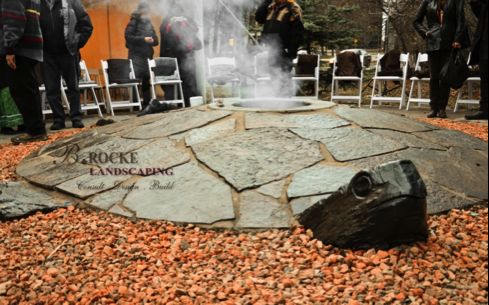Designers have become very talented at replicating the physical appearance and functionality of living beings. The following designs are a few examples that imitate traits of their animal counterparts:
- Rocke Landscaping – University of Manitoba – Winnipeg – 2014 (see above)
One of our recent, commercial projects. We used paving stone, black granite boulders, and red shale. Not only does the design portray a turtle, but it also has symbolic meanings representing Aboriginal culture and history.
- Santiago Calatrava – Milwaukee Art Museum – Milwaukee – 1975
An art museum with “wings” that open and close at certain times of day. I had the opportunity to visit the museum, inside and out, and was amazed with its architecture. While I visited in the early morning, I watched the building come to life as the wings opened up. The entire process took a few minutes, but it was definitely worth the wait!
Click here to watch a video. (http://vimeo.com/6682999)
- Unknown Designer, Location, Date
This bush speaks for itself! Although no information could be found with regard to its origins, it appears as though these animals were skilfully trimmed and shaped from a bush. From the image, it is evident that the artist has succeeded in depicting a family of elephants. It is difficult to tell the exact scale of this topiary, but how amazing would it be if it were life-sized?
For your unique project ideas, please contact B. Rocke Landscaping. We will be more than happy to turn your ideas into reality. Whether it is a basic garden, or even a symbolic landscape installation, our designers and staff have the experience to make your ideas come to life. For more pictures, check out our University of Manitoba – Dysart Project, in which Aboriginal symbolism was incorporated into the design.
Image Sources:
Fig. 2 – De Mesa, Omar. “Calatrava Art Museum.” 2012.
Fig. 3 – Unknown Artist. “Untitled.” N.D. http://cl.jroo.me/z3/T/O/D/e/a.baa-Awesome-Elephant-Garden-Bush.jpg



